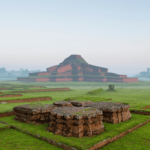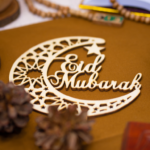Introduction:
Bangladesh’s cultural heritage is the most significant, diversified and influential from ancient empires to the modern era, particularly for religious movements, and indigenous traditions. From the time of the Bengal Sultanate to the modern era, it has cultivated an incredibly rich culture. You might be surprised to know that Bangladesh is home to not just one but three UNESCO World Heritage Sites are there. If you’re fascinated by ancient architecture, traditional art forms, or unique festivals, Let’s have a walk through the key aspects of Bangladesh’s cultural evolution.
Ancient Civilizations and the Early Foundations of Bengali Culture:
Ancient civilizations and the early foundations of Bengali culture are rooted for thousands of years, since the beginning of the early settlers of Bengal. Many people have many opinions, however, the majority of historians believe that the region was initially home to Dravidian and Austroasiatic tribes, who brought their own languages, rituals, and crafts. These ancient societies left behind artefacts, particularly in the archaeological site of Mahasthangarh, one of the oldest urban settlements in Bangal, dating back to 3rd century BCE.
Later, the region came under the rule of the Maurya and Gupta Empires during the 4th to 6th centuries CE. These empires influenced the early political and cultural systems, and our social foundation is rooted there. Spread of Hinduism and Buddhism began to flourish in the region at different times. One of the most influential periods of early Bengal was during the reign of the Pala Empire (8th-12th century CE), a Buddhist dynasty that played a vital role in shaping the spiritual artistic heritage of Bengal and language, literature as well. The Pala rulers were responsible for the construction of several important Buddhist monasteries and temples, including the Somapura Mahavihara, now recognised by UNESCO as a World Heritage Site.
The influence of Buddhism can be seen in the Pala-era sculptures, terracotta art, and manuscripts which travelled beyond Bengal to Southeast Asia and the Tibetan Plateau. The empire’s dedication to education is also evident, as the Nalanda University, one of the world’s oldest universities, was heavily patronised by the Pala rulers. At first Nanda, was for the monk in religious purpose later spread for all.
As Buddhism is downward in the region, Hinduism regained prominence, particularly under the Sena and Chandra Dynasties, who left behind and incredible array of temples and religious artworks. These dynasties solidified the cultural roots of Bengali Hindu traditions that continue prosper today.
The Mughal Era and Islamic Influence in Bengal:
By the 13th century, by Iktear Uddin Bin Boktiar Khalzi in 1206, Islamic rule had begun to establish itself in Bengal and the rise of the Bengal Sultanate and later the Mughal Empire continued today. The spirit of Islam spread through the enlightenment of Sufism alimta welcomed to Islam. This period brought a new wave of cultural and architectural transformations. The Mughals left and indelible mark on the landscape with their impressive mosques, forts, and gardens, most notably in Dhaka, which became a key city during Mughal rule, the present capital of Bangladesh.
The stunning architecture of Sixty Dome Mosque (Shat Gambuj Mosque) in Bagerhat, another UNESCO World Heritage Site, showcases the grandeur of Islamic influence. Built during the Bengal Sultanate, Khan Jahan Ali. This mosque, with its extensive use of domes and terracotta decorations, is a masterpiece of mediaeval Islamic art. Although known as Sixty Dome Mosque, total domes are seventy seven (77).
Sufism, a mystical form of Islam, also played a significant role in shaping the spiritual life of Bengal. The teachings of Sufi saints blended with local folklore, creating a unique spiritual culture that can still be felt today in Bangladesh’s rural festivals and religious gtherings. Most attractive is that simple lifestyle of them.
Colonial Rule and the Birth of Modern Bengali Identity:
The arrival of the British East India Company in the 18th century led to profound changes in Bengal’s cultural and social fabric. Under British colonial rule, Bengali society experienced a mix of oppression and transformation. Not only in society but also the governing body their influence is noticeable. Western influences began to permeate education, architecture, and the arts, especially with the establishment of institutions like Dhaka College and Presidency college.
The 19th century saw the rise of the Bengal Renaissance, a cultural movement that sought to revive the region’s intellectual and artistic traditions. Prominent figures like Rabindranath Tagore and Bankim Chandra Chatterjee contributed to the flourishing of Bengali literature, poetry, and art. Tagore, the first non-European to win the Nobel Prize in Literature, is a towering figure whose works still resonate across Bangladesh to beyond it, today.
The Partition of Bengal in 1947 was another monumental event that reshaped the region’s cultural identity. Divided along religious lines, East Bengal (now Bangladesh) was primarily Muslim, while West Bengal remained predominantly Hindu. The division caused significant cultural shifts, influencing art, language, and religious practices, and leaving lasting scars on the shared heritage of the Bengali people.
Modern Era: Post-Independence Cultural Evolution (1971-Present)
Bangladesh’s Liberation War in 1971 not only marked the country’s political independence from Pakistan but also catalysed a cultural renaissance. The struggle for freedom was immortalised in art, music, and literature, with many iconic cultural figures emerging as national heroes, Bangabandhu Sheikh Mujibur Rahman, Mowlana Abdul Hamid Khan Bhasani etc. The war’s impact continues to be commemorated in memorials, museums, and annual events that honour the sacrifices made during this time.
Today, Bangladesh is experiencing a revival of modern art, literature and music as well. From the classical Baul music that reflects the soul of the nation to contemporary Bengali cinema, the arts in Bangladesh are a thriving expression of both tradition and innovation. Dhaka Art Summit, one of Asia’s leading art platforms, showcases the best of contemporary Bangladesh artists, bringing their works to a global audience.
Festivals continue to play a vital role in preserving and celebrating Bangladesh’s cultural heritage. Whether it’s the vibrant Pohela Boishakh celebrations, which mark the Bengali New Year, or the internationally renowned Ekushey Book Fair, which commemorates the Bengali language movement, these events serve as powerful reminders of the nation’s enduring cultural spirit.
Preservation of Cultural Heritage in Bangladesh:
In spite of its rich history, many of Bangladesh’s historical sites and monuments face challenges due to urbanisation, environmental damage, and insufficient resources for preservation. UNESCO World Heritage Sites, such as the Sundarbans, Sompura Mahavihara, and Sixty Dome Mosque, have come under threat from environmental degradation and climate change. Thankfully, both the Bangladesh government and NGOs are taking active steps to preserve and restore these treasures.
Initiatives aimed at protecting the indigenous tribal cultures of the Chittagong Hill Tracts and other regions are also gaining momentum. These efforts focus on safeguarding local languages, traditions, and crafts from disappearing in the face of glabalisation.
Conclusion:
Bangladesh’s cultural heritage is a testament to centuries of history, spiritual depth, and artistic innovation. From the ancient ruins of Buddhist monasteries to the modern rhythms of its bustling cities, this country’s cultural story is one of resilience and diversity. As Bangladesh continues to evolve, it remains deeply connected to its roots, celebrating both its ancient traditions and modern artistic expressions.
For travellers and cultural enthusiasts alike, exploring Bangladesh’s rich heritage offers a journey through time, where every festival, site, and art form tells a story. Whether you’re visiting historical landmarks or engaging with contemporary artists, you’ll experience the incredible depth of this nation’s culture. Ready to start your cultural journey through Bangladesh? Let the adventure begin!







